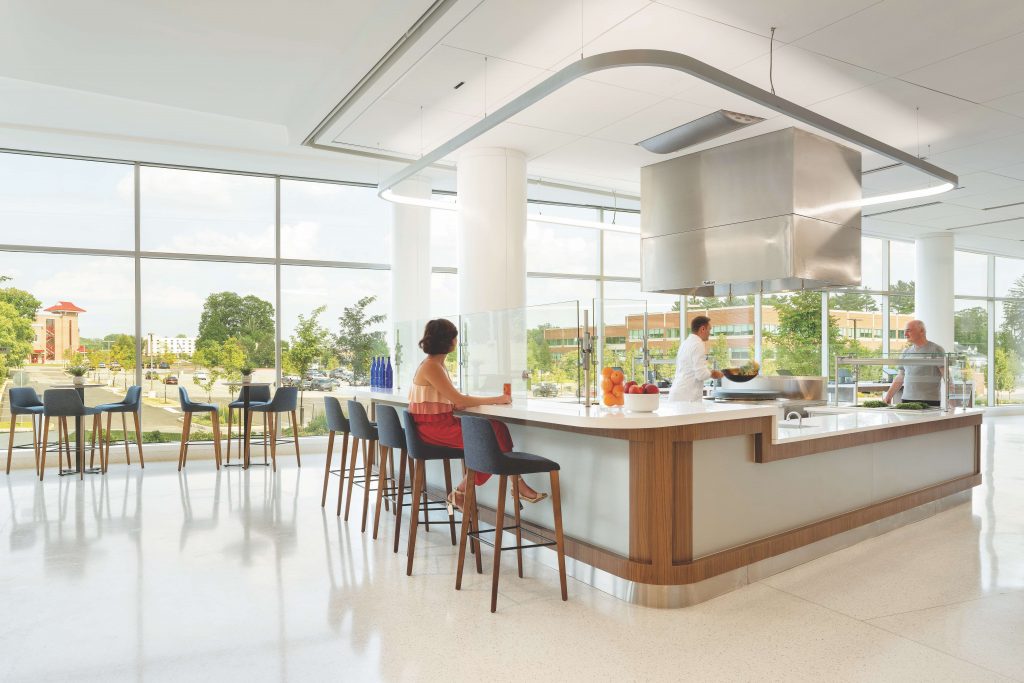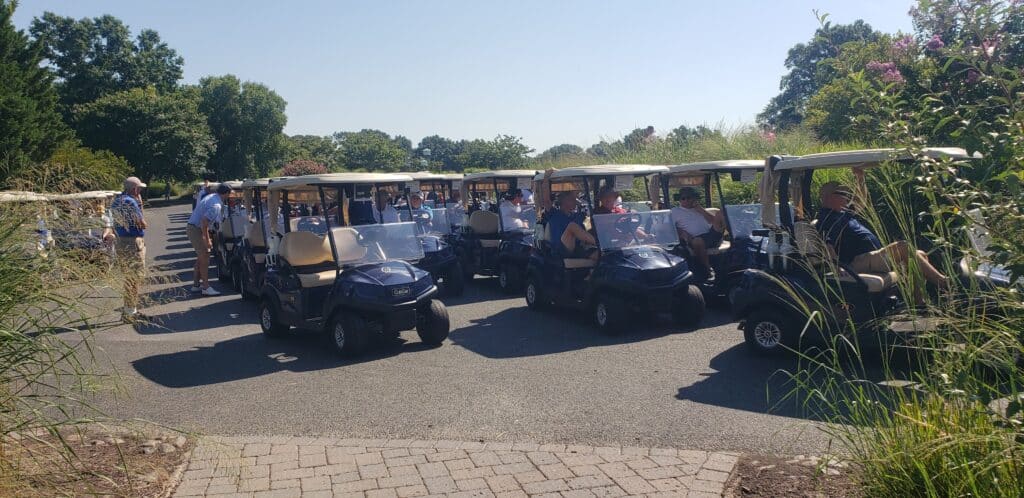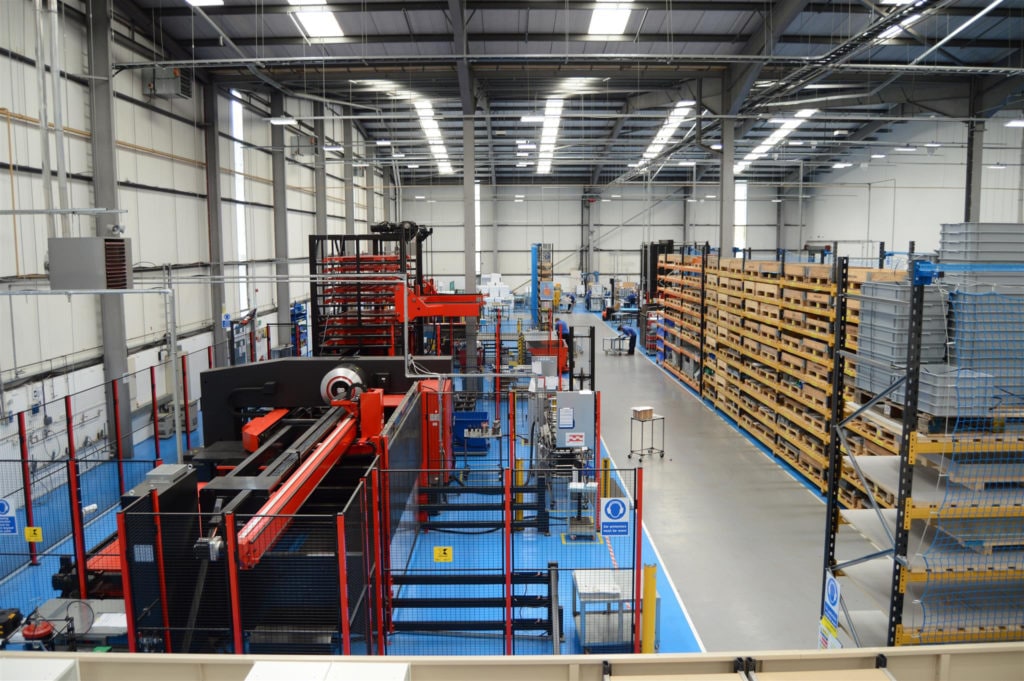
Let me set the scene. The sun was gleaming across the green fields as I pulled into the factory car park on my first day, on Monday 7 March. After I signed in at the office I was greeted by Marc Byford, who explained the itinerary of my three-day stint at Halton: what I would be doing, where I was in the factory and the people I would meet. All I knew about Halton was that it designed ventilation services for the kitchens we design, but I was soon introduced to Phil Gibson, who gave a presentation with an all-round overview of the company, how it evolved over the years and more importantly the products it offers to clients. It was good to get a better understanding of the products and more importantly what they support in the kitchen. Some of them really are amazing pieces of engineering, especially the M.A.R.V.E.L system.
I then had a tour of the workshop with Marc. He explained the entire process from start to finish, from the CNC machine, to the folding bays, to the welding stations right through to despatch. I met practically all of the workshop team too, they are like a huge family. We then ventured upstairs where electrical and mechanical service risers and raceways were made. I had never come across this back at the SHW office so it was totally new to me. I was amazed by the rigorous testing that each product undergoes before being sent out, meaning consistent high quality is met always.
Now I knew the products and the workshop process, Marc felt it was right for me to see a new enquiry being dealt with in sales. I sat with Chris Davis who ran me through how enquiries are dealt with around the office and the procedure of placing it into a database/spreadsheet, creating relevant folders and understanding the requirements of the project. With drawings from architects or clients, the sizes can be worked out, this can be input into the system and then a proposal can be made. By sitting with Ian Horton I began to understand the fundamental steps taken by the sales department in order for an enquiry to become a live project.
Next destination: drawing office. Lisa Worland was given the job to draw the canopies. I sat with her for most of the afternoon, to get an understanding of what the drawing office do before moving to sit with Chris Champion, a wonderful guy and a pleasure to work with.
My second day at Halton started with a trip to Hoxton Market in London, for a project known as Chris Kitch, one of our projects, designed by Derek Horn. The purpose of the visit was for Halton to understand the ventilation requirements of the kitchen. We met a project manager there who surveyed the site. It was great seeing an empty site. I was busy taking photos and linking them with the layout SHW provided. I also met Christian Honor, the Head Chef. As if I haven’t said how amazing everyone is, he is another to add to the list, friendly, down to earth and thrilled to know I was part of SHW. Christian even told me about his new book, I might have to get myself a copy! I loved seeing the co-ordination between Christian and Marc. I could see the relationship between client and supplier was integral to getting the job done right.
The afternoon was spent in the drawing office again. I sat with Allen Hankins who produces manufacturing drawings received by the likes of Chris and Lisa. Ultimately, the drawings Allen produces are a ‘flat pack’ of the canopies. This makes them readable to a CNC machine. Allen told me of his experience as a sheet metal worker helping him visualise the canopy in flat pack form. Unfortunately, the CNC machine was down for maintenance, so I couldn’t see it in action!
On the third and final day I was out of the office with Joe Gibson, the installations manager. We had a long drive from Rochester to Wembley, which gave us chance to talk. With everyone at Halton I felt compelled to talk about my experiences and how I took on a role at SHW. We visited two sites, one that would be surveyed following an enquiry, and the other, a recently completed project where I could see Halton’s systems in action. Both manufactured Asian food, but each site differed tremendously.
The first was relatively small, but needed its work space expanded. Joe explained everything that needed to be done and why, almost like a mini-lesson on ventilation. I finally started understanding the basic concept of air flow and supply and extract air. We then moved onto the second. Greeted by one of the chefs, Joe walked me round each of the kitchens. The operations there were different. Only vegetarian food was cooked but on a larger scale. There was a lot to take in, M.A.R.V.E.L, ventilated ceilings, the lot. I was even shown the control box where each system installed is monitored. A cracking piece of kit. I was so engrossed by the day, and had learnt things I could take back to the office. I could talk processes through to myself, that mental visualisation really helped me learn. Once everything had been seen we headed back the office, finishing off my third day at Halton. The day was successful, I gained a more rounded knowledge of Halton, although I wasn’t too sure on the hair nets, blue bags for feet and white overalls. I did look the part though!
Why was it useful?
Sending me on a placement like this to a company like Halton, I believe, allows me to gain a better understanding of the industry I am in. I have only been in it for just over 6 months, and I am working towards a career that needs an awareness of the current market, products it has to offer and the people I will be working with. By visiting one factory, its opened up my eyes to the operations companies such as Halton undertake for, say, an enquiry for a project we are designing. It’s all well and good us drawing an orange rectangular box and saying ‘that’s a canopy’. But by working with the companies so closely, we can begin to understand what they do and how it goes from this simple orange box to a fully working canopy and ventilation system. I believe that was the most important thing that I learnt during my work experience.
At Halton, I received practical, first-hand knowledge of the company and its products. It’s the way I learn. It doesn’t mean I can’t learn from the office, because I can, I just feel it’s the best way to learn something, from the professionals themselves. I also love going out and visiting these places in general. If I am out of the office for a day in London, I meet new cultures, new people and new opportunities. For me it makes the industry an exciting one to be involved with.
Other placements
Halton has been the only organised work experience that I have been on so far, but I’ve visited a fair few sites, the likes of The Fat Duck in September, Tate modern not soon after and The Kennel Club. Nothing tops seeing Heston’s kitchen, even his experiment lab!
Gareth’s extremely keen on getting me into kitchens such as Dinner by Heston with Chef Ashley Palmer Watts, which is an exciting prospect. I don’t know too many teenagers working with a Michelin star chef! On the other hand, a week in a fabricators is looking very probable, along with a day or two in a show kitchen seeing equipment in action. These are a few to say that least, we have many more planned for the future.
Why an apprenticeship?
Getting involved in an apprenticeship is the best decision I have made. School facilitates learning but it isn’t overly specific, and there aren’t many opportunities to get first-hand experience. I think that is what pushed me to leave after my first year in sixth form. I had good grades, it was enjoyable. Some people have asked if I regret joining SHW, I don’t see any reason for me to, in fact it has worked out quite perfectly.
Jack Luckings




